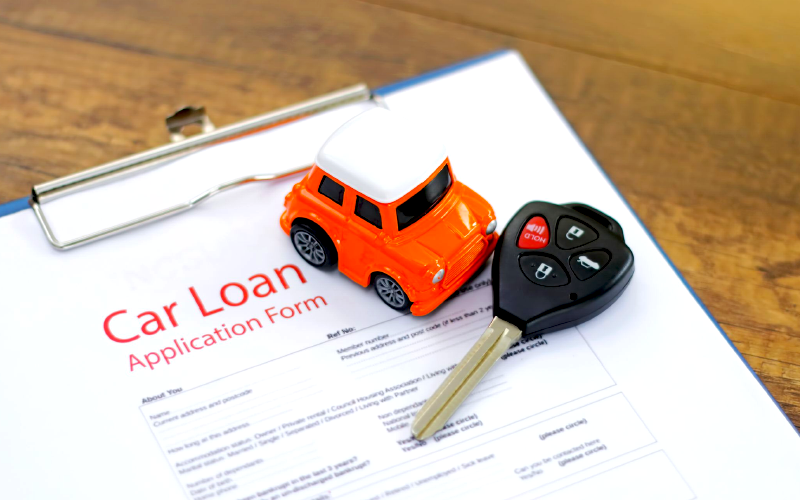If you take auto company advertising at face value, cars appear to be more affordable than ever. There seems to be no end to the amount of fee saving, price reducing, low-interest financing and other things that make us think that no matter our current employment status and financial situation, that we can all afford the car we want.
It’s this kind of thinking that gets people stuck into debt traps and eventual encounters with repossession professionals. Our credit ratings take a hit and we have to face the total humiliation of having a prized asset taken from us as we are labeled a “deadbeat” at best or “bankrupt” at worst. This problem has inspired the title of today’s blog, in which we are analyzing a critical question that every potential car buyer should explore – how much car can I really afford?
Background: Car Financing “Epidemic” in the US
Buying cars on finance is an incredibly common option that Americans tend to take. Credit rating agency Experian showed statistics in the first quarter of 2020 that showed an incredible $1.35 trillion was currently owed on outstanding car payments to banks and other lenders. It’s perhaps a little less surprising when you factor in that according to the Federation of State Public Interest Research Groups, about 85 percent of new vehicles purchased in the US are done so on finance, and about 54 percent of used vehicles.
That’s a lot of borrowed money being used for car purchases, much of which is probably quite above board. There’s nothing wrong with credit in itself. It only becomes a problem when you take out and use more credit than you can possibly afford to repay. Lenders like it when you’re in debt because your interest payments are keeping their books in the black, but on a personal level it makes things difficult.
The website transportgeography.org shared information that pointed out that the number of households in the US with two or more cars has increased from 22 percent in 1960 to 58 percent in 2017. That means that having more than one car is the norm. It also means that the norm is households making multiple payments to keep their cars going. Data from titleloanser.com in 2019 suggests that this norm is becoming something of a problem, with 2 million cars being repossessed across the country every year, equating to 226 cars being taken back every single hour.
Solution: The 20/4/10 Rule
There is a very elegant solution to this problem that if more people adhered to, the fewer problems with unwanted financial strain and eventual car repossession they would face. It’s commonly known simply as the 20/4/10 rule, and it refers to how you should plan finances when shopping for a new car, be it a brand-new or pre-owned car.
Let’s break down each part of the rule and try to understand it better.
First, “20” – A 20-Percent Deposit
The first number, 20, refers to being able to put down at least 20 percent of the car’s sale price in the form of a deposit. In fact, if you can afford to put down 20 percent of the sticker price with added fees it’s even better because after negotiating the final sale price down, the result is a deal you can afford even more than you initially planned.
But why 20 percent? It seems an arbitrary sum, but in fact there’s a very good reason for choosing 20 percent over any other number. It’s all to do with the typical rate of depreciation that new cars face when you buy them. A new car will lose 20 percent of its value in the first year of its life. What may be even more surprising is that just under half of that loss occurs when you start the car and drive it off the lot. This being the case with a 20 percent reduction in value, a deposit of 20 percent guarantees that your car loan won’t “go underwater,” as the industry says.
When a car finance deal has “gone underwater” it means that the amount of money that you still owe on the car loan is now greater than the actual residual value of the vehicle. When you factor in a 20 deposit and 12 months of solid payments made on the car loan, the residual value of the finance agreement is bound to be much lower than the car’s actual value. This would mean that, in theory, you could even sell the car, pay off the loan and have some money left over.
Second, “4” – Car Finance for Max. 4 Years
The second number, 4 refers to the ideal number of years you should allot for the repayment of the car loan. Of course, things are a bit different if you are leasing, but for a regular car loan, 4 years is best, even though many dealerships may well offer you a longer-term arrangement of 5 or even 6 years.
Those longer arrangements can seem tempting because it’s natural for us to feel that the longer of a period we can spread the loan over, the easier it is for us to manage. In fact, there’s a solid logic to that, but the long-term result of taking out a 5- or 6-year car loan is that you end up paying a lot more interest overall, which is great for the dealership or finance company, but not that great for your bottom line when you’re still paying the same interest rate on a car you had brand-new but is now 5 years old and very out of date.
So, why not just take out a car loan of just 2 years? In that way, your interest paid would be less, you own the car faster and you’ve nothing more to worry about. Once again, it’s logical in a way, but of course it would only work if you could afford the much larger monthly payments that would result from having such a short loan period. For this reason, the recommended rule of thumb is to take out a 4-year loan.
Third, “10” – This Means 10 Percent of Gross Income
The final number, 10, refers to the level of recommended regular monthly payment that you make to the dealership, bank, credit union or other lender plus insurance. Look at the figure of your gross income — that means income before taxes and other deductions and expenses — and get the 10 percent figure on that. That number is the maximum you should be paying monthly for the car.
One important thing to take into account here is that this 10 percent figure includes car insurance. It’s not just the amount that you pay to the finance company, but also the insurance figure. Some people might think that this figure is low, and for the right car they might be happy to pay as much as 20 percent of their gross income. It’s understandable, but once again this number is not arbitrary.
The year 2020 should have taught many people around the world the importance of not overreaching when it comes to personal finances. The COVID-19 pandemic has seen millions of people get their incomes reduced or even eliminated as they were furloughed from their jobs, forced to work from home for less, or even forced to change jobs entirely. Imagine being caught in a situation like that where 20 percent of your income was being spent on a car; a car that you now can barely use because of lockdown restrictions.
Example Scenario: White-Collar Professional Buying a Car
Let’s see briefly how the 20/40/10 rule would be applied to a typical situation. Imagine we have Shirley, who 3 years ago completed her graduate degree at NYU and now has a respectable middle-management position where she’s earning a gross income of $6,000 a month, or $72,000 a year. She wants a nice, compact executive sedan in which she can commute to and from work, so she’s looking at a BMW 3 series, which starts at $41,250 at the base level and is $48,000 when she applies the additions that she wants.
The good news is that Shirley has been a prolific saver, and has $10,000 in cash savings, all of which she is willing to put toward the car. It seems odd to use so much of your savings in one go, but she happily puts down $9600 as a deposit on the vehicle. The “20” she can meet with the money she has, so she’s one step closer to her dream sedan.
The next number is the “4.” This is no problem since BMW offers loans of 4 years, as well as longer and shorter periods. She opts for the 4-year plan, no problem. With an interest rate of 2.62% and the New York sales tax on new cars of 4 percent factored in, the monthly payment comes to $886. Let’s see if that applies to the final part of the rule, the “10.”
To work out if Shirley can afford the 10-percent rule, we first need two numbers on the spending side. We need the loan repayment and the insurance. The loan repayment we have seen will cost $886, and the average BMW 3 Series insurance, which insuranks.com estimates at $180 monthly. That comes to $1,066 a month. Shirley’s gross income each month is $6,000, meaning that her monthly payment shouldn’t go over $600. It seems that this BMW 3 Series with all the extras is a little bit out of her reach if she’s to stick to the 20/40/10 rule. She therefore decides to lower her costs by looking for a used car.
Is the 20/4/10 Rule Universally Accepted?
The answer to this question is absolutely not. There are several aspects of the rule that people don’t agree with, and so they may say to Shirley that if you want that BMW 3 Series, you go for it. It could well be that Shirley’s individual circumstances make breaking the rule more than feasible. It could be that she lives in a house owned by her family and so doesn’t pay rent. There may be partial expenses for the car that her company will pay for, like gasoline. Shirley might live very frugally in all other areas of her life, as well as having no children to support, all of which makes breaking with the 20/4/10 convention a lot less problematic.
There are other objections to the 20/4/10 rule as it applies to the US market in particular, also mostly aimed at the final figure of “10.” It’s easy to defend the deposit size and the length of the loan, but the 10 percent of gross income in particular is a little perplexing. It seems odd that to some critics that if you are going to talk about keeping a car as affordable as possible, it would be a much more accurate and helpful number to use net income for the 10 percent calculation. A lot of people have the same gross income bracket, but their bottom lines — the net income — vary greatly because of individual circumstances.
Therefore, rather than using a blanket rule of 10 percent of the gross, it might work better for people if they used a percentage of their net income. It would reflect their own individual circumstances better, and probably have more favorable results in the long term.
Truth or Myth? Paying Cash is Always Better
If you are buying a car and are worried about the arrival of potential crises in the future, then the best policy on the surface at least is to just pay cash for the car and own it outright from the very beginning. This means you only pay your regular monthly expenses like insurance, gasoline and maintenance, all of which would be quite low on a modern new car.
It’s certainly not a myth that paying cash is beneficial to you in many ways, but it is a myth to think there is no downside at all to paying cash in full for the vehicle when you buy it. First of all, it’s a lot of cash to hand over at one time, almost regardless of whatever car it is. Unless you’re buying an old banger that costs $400, you’re going to be spending thousands of dollars at one time, and it’s a lot of cash to invest directly into something that just continually loses value over time.
There is one more potential pitfall, too, which is that some dealerships might attempt to charge you something known as the cash “up charge” when you want to buy a car with a full cash payment. Basically, it means that there will be some additional fees in there designed to compensate at least a little for the fact that the dealership is not going to make one cent from you in the long term with the interest payments you would have paid on a loan.
If you are worried about a sudden crisis along the lines of a pandemic or losing your job however, paying cash is still the best way to safeguard against it. If you need to sell the car to raise emergency funds, you can do so quickly and directly without having to consider clearing any loan debts. Your car’s title will be clean, and not “lien,” allowing you to find a buyer at the Kelley Blue Book value, or to simply sell back to a dealership for probably a lower price but an instant and convenient transaction.
Conclusion – Should We Follow the 20/4/10 Rule?
Considering the criticism that has been levelled against it, is it still worth following the 20/4/10 rule? There are always contingencies we can take if things go wrong, and if we are frugal in other areas, why can’t we dedicate more of our income to a new car, or offer a smaller deposit, or spread the cost over longer?
The fact is that the 20/4/10 rule is not law. It’s a simple guideline designed to help more people get to the right balance with their car payments. It’s only meant to help prevent those who are always in the shadow of potential financial trouble from becoming overly burdened with a financial albatross. We suggest that if you are thinking about buying a new car, then you apply this rule.
Equally, you can apply this rule to used cars as well, and will undoubtedly find that you’ll be able to get more car for your 20/4/10 than you would if you buy brand-new. Regardless of whether you ultimately follow this rule when it comes to making the final decision on a new car, it’s at least a good way to see what kind of car you could afford in the longer term of the finance agreement, and not just simply looking at the sticker price of the car in question. Use it to help you avoid potential financial traps down the road.



